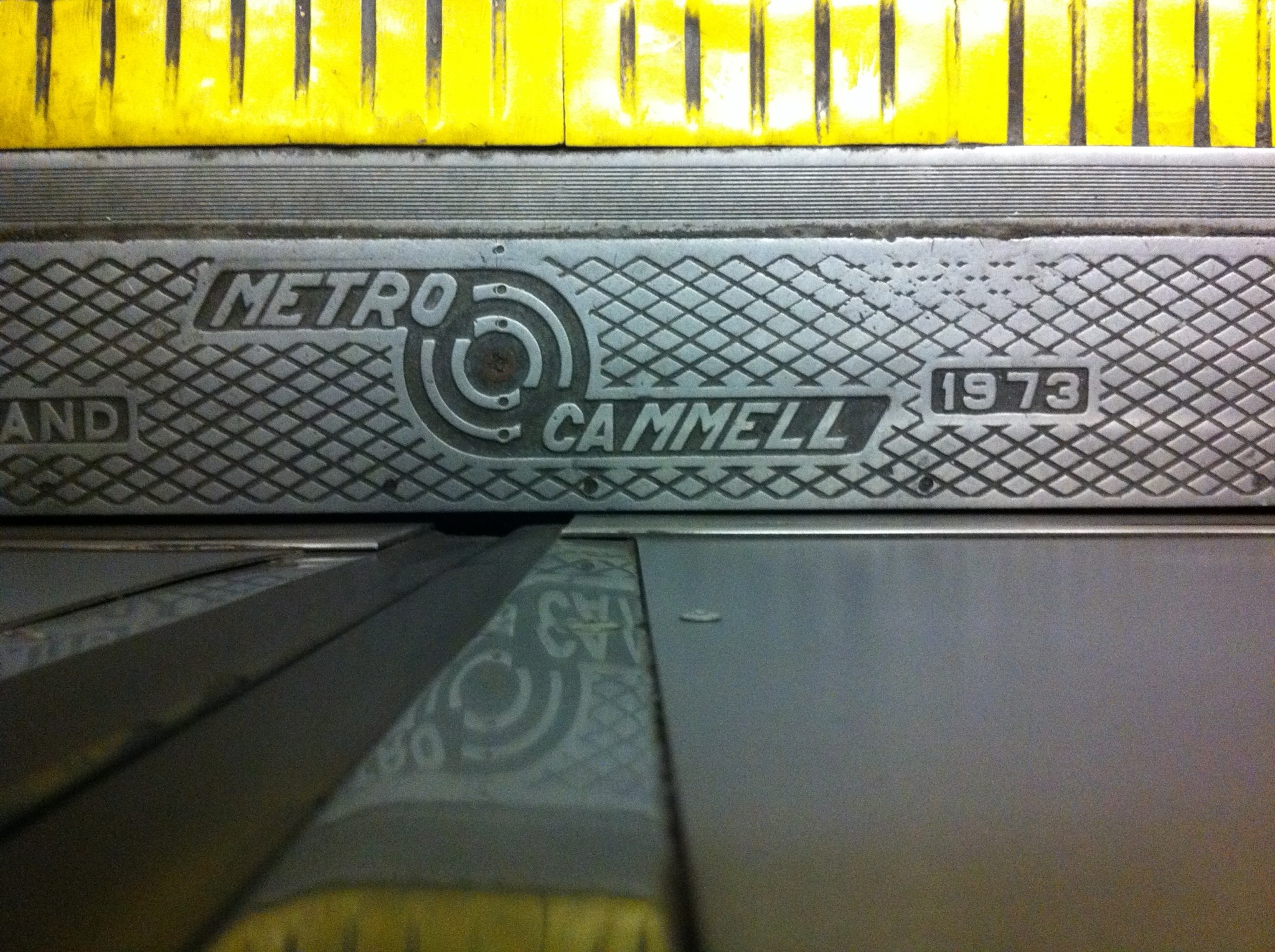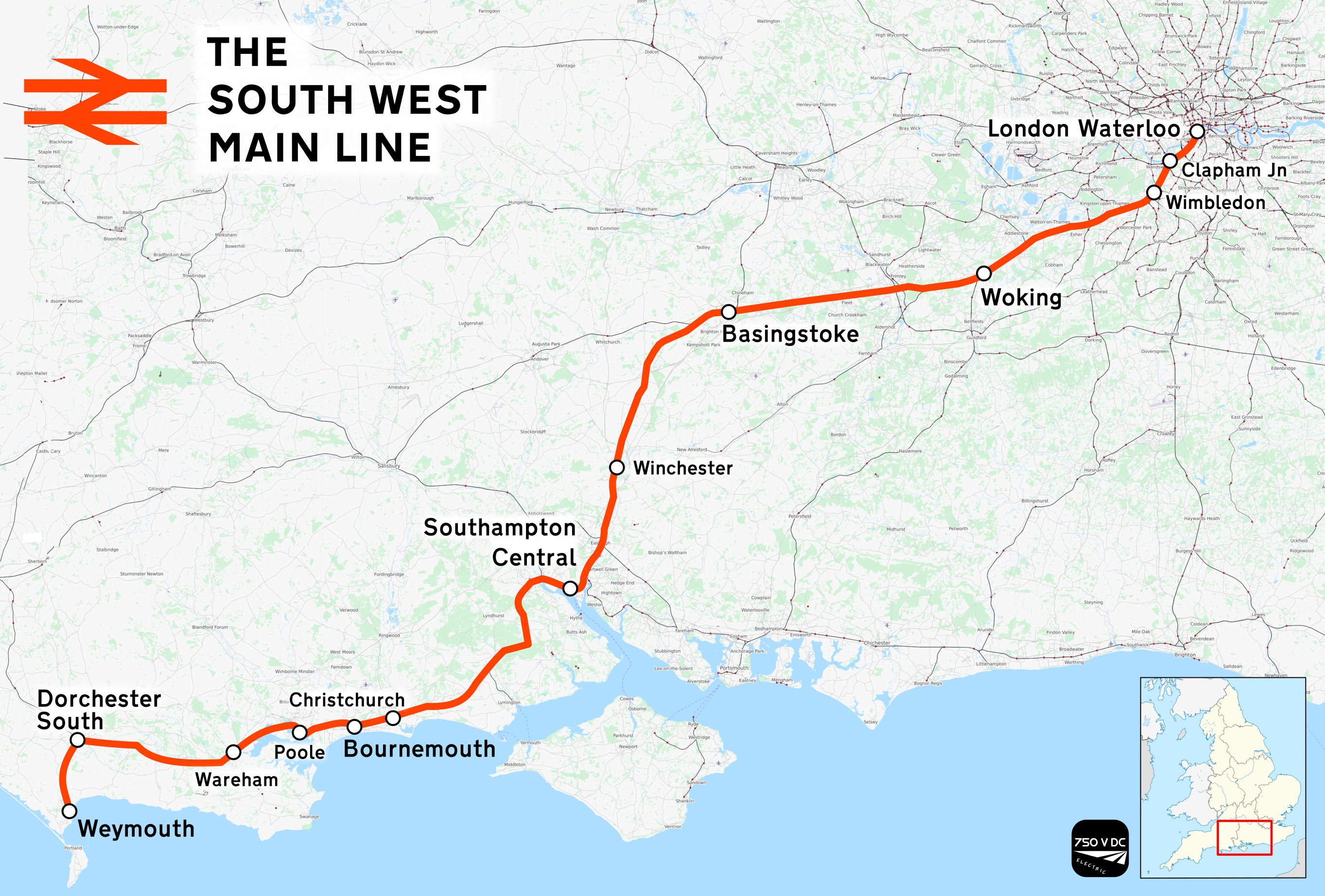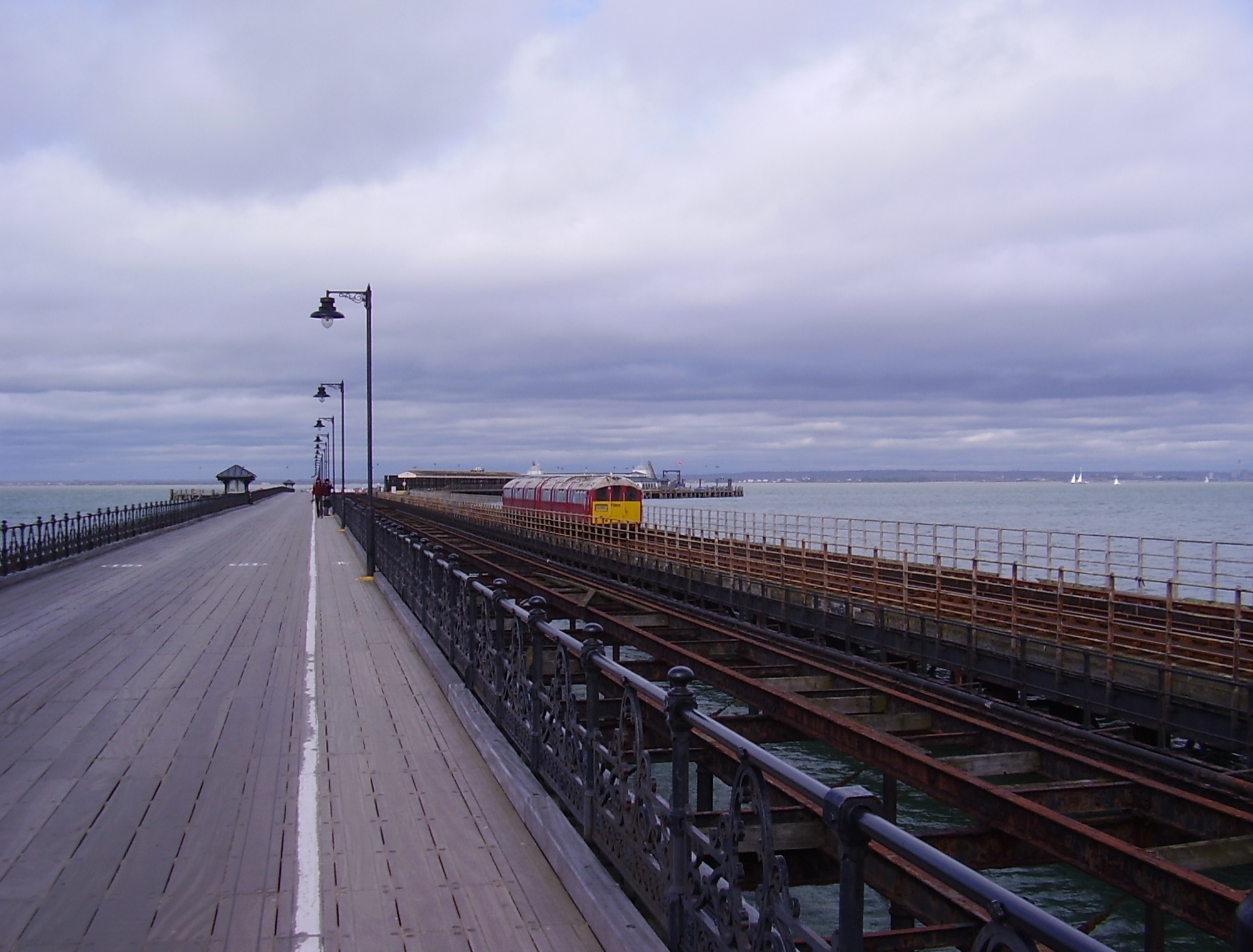|
British Rail Class 483
The British Rail Class 483 electric multiple units were originally built as 1938 tube stock units for London Underground. They were extensively refurbished between 1989 and 1992 by Eastleigh Works, for use on services on the Isle of Wight's Island Line. This was despite having already been used for nearly 50 years on the London Underground network. The units replaced the even older and life-expired British Rail Classes 485 and 486 units which were introduced in 1967, but were originally built as 'Standard' stock units for the London Electric Railway in 1923. The trains were 83 years old when they were withdrawn in January 2021; they were the oldest passenger trains in Great Britain remaining in regular passenger service at the time. They were withdrawn on 3 January 2021, with the line closed from 4 January until 1 November 2021 for upgrade works, after which they were replaced by Class 484s. Of the six units present on the Island at the time of their withdrawal, all have b ... [...More Info...] [...Related Items...] OR: [Wikipedia] [Google] [Baidu] |
Metro-Cammell
Metro-Cammell, formally the Metropolitan Cammell Carriage and Wagon Company (MCCW), was an English manufacturer of railway carriages, locomotives and railway wagons, based in Saltley, and subsequently Washwood Heath, in Birmingham. Purchased by GEC Alsthom in May 1989, the Washwood Heath factory was closed in 2005. The company designed and built trains for the railways in the United Kingdom and overseas, including the Mass Transit Railway of Hong Kong, Kowloon–Canton Railway (now East Rail line), the Channel Tunnel, and the Tyne and Wear Metro, and locomotives for Malaysia's Keretapi Tanah Melayu. Diesel and electric locomotives were manufactured for South African Railways, Nyasaland Railways, Malawi, Nigeria, Trans-Zambezi Railway and Pakistan. DMUs were supplied to Jamaica Railway Corporation and the National Railways of Mexico. The vast majority of London Underground rolling stock manufactured in mid-20th century was produced by the company. It also designed and ... [...More Info...] [...Related Items...] OR: [Wikipedia] [Google] [Baidu] |
Underground Electric Railways Company Of London
The Underground Electric Railways Company of London Limited (UERL), known operationally as the Underground for much of its existence, was established in 1902. It was the holding company for the three deep-level "tube"A "tube" railway is an underground railway constructed in a circular tunnel by the use of a tunnelling shield, usually deep below ground level. Today the word is used colloquially to refer to any or all of the London Underground, even those parts using cut and cover or running above ground. underground railway lines opened in London during 1906 and 1907: the Baker Street and Waterloo Railway, the Charing Cross, Euston and Hampstead Railway and the Great Northern, Piccadilly and Brompton Railway. It was also the parent company from 1902 of the District Railway, which it electrified between 1903 and 1905. The UERL is a precursor of today's London Underground; its three tube lines form the central sections of today's Bakerloo, Northern and Piccadilly lines. T ... [...More Info...] [...Related Items...] OR: [Wikipedia] [Google] [Baidu] |
South West Main Line
The South West Main Line (SWML) is a 143-mile (230 km) major railway line between Waterloo station in central London and Weymouth on the south coast of England. A predominantly passenger line, it serves many commuter areas including south western suburbs of London and the conurbations based on Southampton and Bournemouth. It runs through the counties of Surrey, Hampshire and Dorset. It forms the core of the network built by the London and South Western Railway, today mostly operated by South Western Railway. Network Rail refers to it as the South West Main Line. Operating speeds on much of the line are relatively high, with large stretches cleared for up to running. The London end of the line has as many as eight tracks plus the two Windsor Lines built separately, but this narrows to four by and continues this way until Worting Junction west of , from which point most of the line is double track. A couple of miles from the Waterloo terminus, the line runs briefly al ... [...More Info...] [...Related Items...] OR: [Wikipedia] [Google] [Baidu] |
Third Rail
A third rail, also known as a live rail, electric rail or conductor rail, is a method of providing electric power to a railway locomotive or train, through a semi-continuous rigid conductor placed alongside or between the rails of a railway track. It is used typically in a mass transit or rapid transit system, which has alignments in its own corridors, fully or almost fully segregated from the outside environment. Third rail systems are usually supplied from direct current electricity. Modern tram systems, street-running, avoid the risk of electrocution by the exposed electric rail by implementing a segmented ground-level power supply, where each segment is electrified only while covered by a vehicle which is using its power. The third-rail system of electrification is not related to the third rail used in dual gauge railways. Description Third-rail systems are a means of providing electric traction power to trains using an additional rail (called a "conductor rail") ... [...More Info...] [...Related Items...] OR: [Wikipedia] [Google] [Baidu] |
British Rail Class 483 - Door Open Buttons
British may refer to: Peoples, culture, and language * British people, nationals or natives of the United Kingdom, British Overseas Territories, and Crown Dependencies. ** Britishness, the British identity and common culture * British English, the English language as spoken and written in the United Kingdom or, more broadly, throughout the British Isles * Celtic Britons, an ancient ethno-linguistic group * Brittonic languages, a branch of the Insular Celtic language family (formerly called British) ** Common Brittonic, an ancient language Other uses *''Brit(ish)'', a 2018 memoir by Afua Hirsch *People or things associated with: ** Great Britain, an island ** United Kingdom, a sovereign state ** Kingdom of Great Britain (1707–1800) ** United Kingdom of Great Britain and Ireland (1801–1922) See also * Terminology of the British Isles * Alternative names for the British * English (other) * Britannic (other) * British Isles * Brit (other) * Bri ... [...More Info...] [...Related Items...] OR: [Wikipedia] [Google] [Baidu] |
Ryde Depot
Ryde Traincare Depot is a railway traction maintenance depot, situated in Ryde, Isle of Wight, to the east of Ryde St John's Road railway station. The depot is operated by Island Line, is allocated the Island Line fleet of the British Rail Class 484s. The depot code is RY. Flood risk A stream runs alongside the railway line at this point, and it has flooded parts of the depot on several occasions. The flood in January 1994 damaged two cars of Class 483 stock, while in 1998 trains had to be moved away from the depot to prevent damage. In October 2000, the flooding was extensive and not only damaged four Class 483 units but also washed away ballast at nearby Smallbrook, meaning Island Line Trains had to suspend their services for several days. History Before the Island Line was electrified, Ryde depot was home to maintenance works for steam locomotives running on the island's rail network. Steam locos still running on the island are now maintained at the Isle of Wight Steam R ... [...More Info...] [...Related Items...] OR: [Wikipedia] [Google] [Baidu] |
Network SouthEast
Network SouthEast (NSE) was one of the three passenger sectors of British Rail created in 1982. NSE mainly operated commuter rail trains within Greater London and inter-urban services in densely populated South East England, although the network went as far west as Exeter. Before 1986, the sector was originally known as ''London & South Eastern''. During the privatisation of British Rail, it was gradually divided into a number of franchises. History Before the sectorisation of British Rail (BR) in 1982 the system was split into largely autonomous regional operations: those operating around London were the London Midland Region, Southern Region, Western Region and Eastern Region. Sectorisation of BR changed this setup by instead organising by the traffic type: commuter services in the south-east of England, long-distance intercity services, local services in the UK regions, parcels and freight. The aim was to introduce greater budgetary efficiency and managerial accountab ... [...More Info...] [...Related Items...] OR: [Wikipedia] [Google] [Baidu] |
Northern Line
The Northern line is a London Underground line that runs from North London to South London. It is printed in black on the Tube map. The Northern line is unique on the Underground network in having two different routes through central London, two southern branches and two northern branches. Despite its name, it does not serve the northernmost stations on the Underground, though it does serve the southernmost station at , the terminus of one of the two southern branches. The line's northern termini, all in the London Borough of Barnet, are at and ; is the terminus of a single-station branch line off the High Barnet branch. The two main northern branches run south to join at where two routes, one via in the West End and the other via in the City, continue to join at in Southwark. At Kennington, the line again divides into two branches, one to each of the southern termini at , in the borough of Merton, and in Wandsworth. For most of its length it is a deep tube line. The p ... [...More Info...] [...Related Items...] OR: [Wikipedia] [Google] [Baidu] |
Ryde Pier
Ryde Pier is an early 19th century pier serving the town of Ryde, on the Isle of Wight, off the south coast of England. It is the world's oldest seaside pleasure pier. Ryde Pier Head railway station is at the sea end of the pier, and Ryde Esplanade railway station at the land end, both served by Island Line trains. Before the pier Before the pier was built, passengers had the uncomfortable experience of coming ashore on the back of a porter and then, depending on the state of the tide, having to walk as far as half a mile across wet sand before reaching the town. The need for a pier was obvious, especially if the town was to attract the wealthy and fashionable visitors who were beginning to patronise other seaside resorts. The original pier The pier was designed by John Kent of Southampton, and its foundation stone laid on 29 June 1813. The pier opened on 26 July 1814, with, as it still has, a timber-planked promenade. The structure was originally wholly timber and measured ... [...More Info...] [...Related Items...] OR: [Wikipedia] [Google] [Baidu] |
Newsquest
Newsquest Media Group Ltd. is the second largest publisher of regional and local newspapers in the United Kingdom. It is owned by the American mass media holding company Gannett. It has 205 brands across the UK, publishing online and in print (165 newspaper brands and 40 magazine brands) and reaches 28 million visitors a month online and 6.5 million readers a week in print. Based in London, Newsquest employs a total of more than 5,500 people across the UK. It also has a specialist arm that publishes both commercial and business-to-business (B2B) titles such as ''Insurance Times'', '' The Strad'', and '' Boxing News''. History Newsquest was founded in 1995 when U.S. private equity partnership Kohlberg Kravis Roberts financed a £210 million management buy-out of the Reed Regional Newspapers group of British papers from Reed Elsevier. In 1996 Newsquest swapped its Yorkshire titles for Johnston Press’s Bury, Lancashire area titles and £9.25 million, sold some of its titles ... [...More Info...] [...Related Items...] OR: [Wikipedia] [Google] [Baidu] |
Isle Of Wight County Press
The ''Isle of Wight County Press'' is a local, compact newspaper published every Friday on the Isle of Wight The Isle of Wight ( ) is a Counties of England, county in the English Channel, off the coast of Hampshire, from which it is separated by the Solent. It is the List of islands of England#Largest islands, largest and List of islands of England#Mo .... It had an audited circulation of 23,006 copies, compared to a local population of 140,500. The paper saw a drop in circulation of 13,657 between December 2009 and December 2017 (37.25%). In December 2020 the paper published an article saying that sales remained above 15,000 copies. The paper had been owned locally from its foundation until July 2017, when it was taken over by Newsquest Media Group. The ''Isle of Wight County Press'' website was launched in 1999 and features headline articles updated on a daily basis. These will often appear on the website before featuring in the next issue, allowing readers to be updated dail ... [...More Info...] [...Related Items...] OR: [Wikipedia] [Google] [Baidu] |




.jpg)




